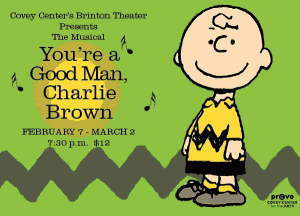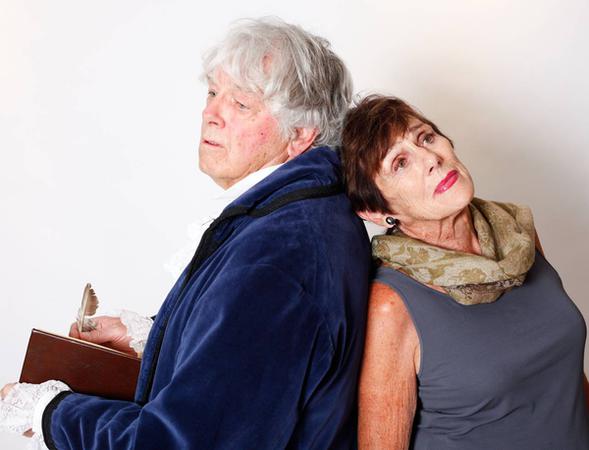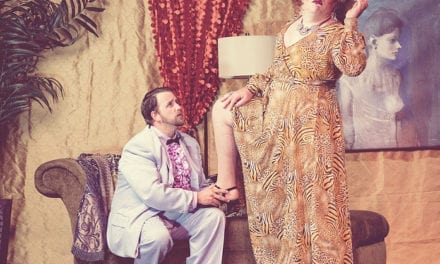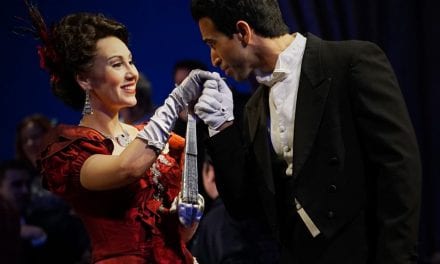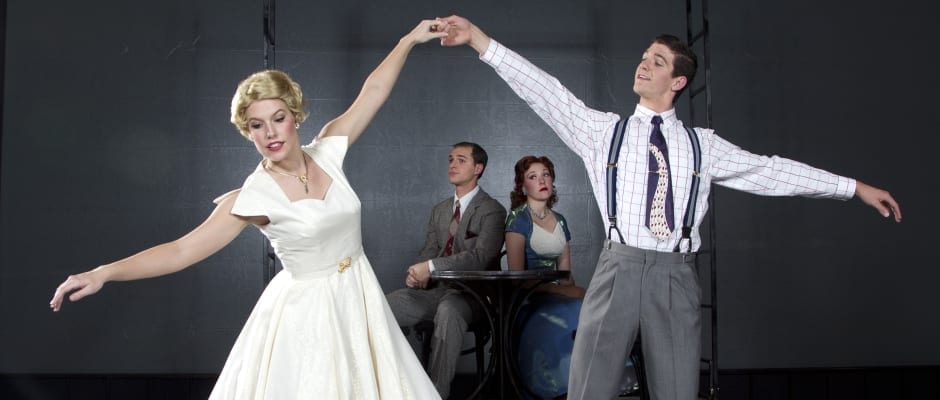PROVO — There is a unique challenge to theatre for young audiences: How to create something that is entertaining for children, but also is fun for adults and high quality? Think about Sesame Street; they tend to focus on kids with their subject matter, but do so using a framework designed for adults, like parodies of popular TV shows. This balance is one that the Covey Center’s current production of You’re a Good Man Charlie Brown strikes quite well through strong acting and audience interaction.

Show closes March 2, 2013.
The story and structure of You’re a Good Man Charlie Brown (based on the Charles M. Schulz comic strip with music and lyrics by Clark Gesner) feels like reading a bunch of Peanuts comic strips. It is broken into a number of vignettes that really don’t tie into each other very often. Rather, they give the audience a chance to examine the characters in a vast array of circumstances that are all too familiar to Schulz’s fans: a baseball game, romantic endeavors, music appreciation, philosophical pondering, and so on. These little character studies are interspersed with fun songs that seem to fit quite well with the original Peanuts gang.
The cast was fun to watch and felt like a true ensemble, with every actor extremely engaged in their roles. There were numerous times where I would catch a character who was not the focus of the scene doing something, a quirk or an action, that was true to character. Sometimes it was just Lucy playing with her hair or Snoopy being fascinated with his food dish, but it was like when catching someone doing a random act of kindness when they thought no one was watching. It really helped to sell the characters. Overall, the acting was strong and there were some really fun choices. The cast had a number of jokes that were improvised based on audience participation and even a few that seemed to have been added to the show throughout the rehearsal process. These jokes really were a joy to watch.
Leading the ensemble was the extremely talented Ben Cummins as Charlie Brown. Cummins gave us a Charlie Brown that was pitiful, but the pity was never forced out of the audience. It was a wonderfully honest and refreshing performance. Cummins also had a great handle on the comedy of the script and a masterful ability to deliver the lines with impeccable timing. It created a character that I loved to watch get picked on because it was so funny, and yet, at the same time I felt sorry for the guy for all the things that seemed to happen to him.
Matching Cummins in stage presence and talent were Bailee Brinkerhoff and Summerisa Bell Stevens as Lucy and Sally, respectively. Brinkerhoff had amazing control of the audience. She seemed completely comfortable and in control on stage and led the cast in audience interactions with great aplomb. Stevens had great delivery in her monologues and one-liners. She provided for some truly great transition moments between scenes, sometimes with a monologue of only a few lines. It should also be mentioned that both of these actors had incredible voices, Brinkerhoff’s rendition of “Schroeder” and Stevens’ performance of “My New Philosophy” were so fun to watch and their voices were so strong they were almost too powerful for the tiny Brinton Black Box.
There were only a few downsides to the acting, and the majority of them were sound issues. During some of the ensemble songs the group would have a hard time matching each other’s pitches, but then would correct the issue fairly quickly. There were a number of times when it would be difficult to hear some of the characters, especially when accompaniment or underscoring was being used as well. I was also a little confused about some choices in acting styles. Particularly it was confusing that some of the actors were playing the characters like children while other actors had an older view of their character. It stuck out particularly in one of the scenes between Schroeder (Christopher Gallacher) and Sally (Stevens). Gallacher seemed to be playing a child around five or six, asking incessant questions in a bouncing manner, while Stevens seemed to be more in the realm of early teens. It didn’t ruin the show, but age seemed fairly inconsistent throughout the production. I was also a little confused by the choice for Linus (Spencer Stevens) to have an lisp. It didn’t seem to be supported in the script or needed as a character quirk.
The overall direction by Skye Cummins was well done. The Brinton is a small enough theater that having the characters frequently act in the aisles amid the audience wasn’t distracting and actually created some unique stage pictures. I also loved the direct involvement of the audience. Frequently the cast was allowed to use the audience for various jokes and antics, which seemed to play well with the younger audience members. There were a few times when visibility was an issue, such as during Snoopy’s (Jordan Kramer) “Red Baron” scene. The doghouse was all the way upstage facing stage left, which meant that Kramer’s face was hidden from half of the audience for the whole scene. This was especially frustrating because the use of sound effects made it extremely difficult to hear the scene as well. On the other hand, the choreography, also mainly by Skye Cummins, worked well for the tiny space. None of the dances was really too complex, and yet because of the space limits, they seemed just right for the small stage.
One major issue in the production was the tech. Some issues were out of the crew’s control, such as a main light going out just before the show. However, some of the issues were design related. The lighting design (Dan James) was fairly good overall, and made economical use of limited instruments to create a number of unique acting areas. However, I didn’t understand the use of so many blackouts. Since many of the vignettes were quite short, around 2-3 minutes, having blackouts in between caused for a somewhat jarring effect, essentially pulling the audience out of the show every few minutes. It was especially frustrating because there were a few scene changes that happened seamlessly without the need for a blackout, which made me wonder why those types of transitions weren’t used throughout. There were also a few scenes that changed color schemes a few times during a song or a monologue, a lighting effect that generally didn’t really add to the overall quality of the scene. In the same vein, the sound design made heavy use of underscoring music, which made some scenes difficult to hear and didn’t really add much to the show.
Despite the grievances, the quality of this show resides in the high-energy, talented acting performances. I had a great time and the production was fun for all ages. If you’re looking for a family event to go to, or if you just want to see a good piece of theater I recommend this show. Only a blockhead would miss it.

